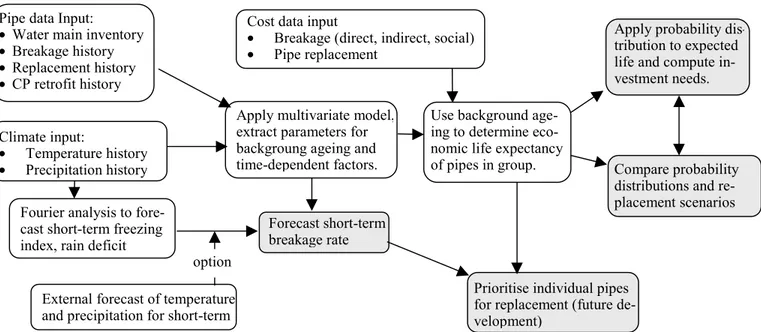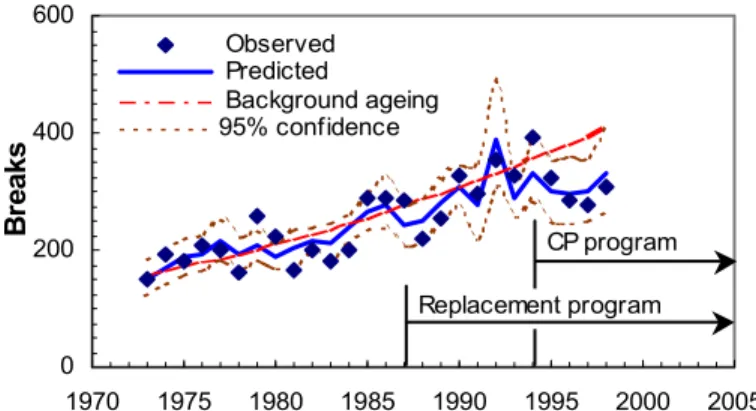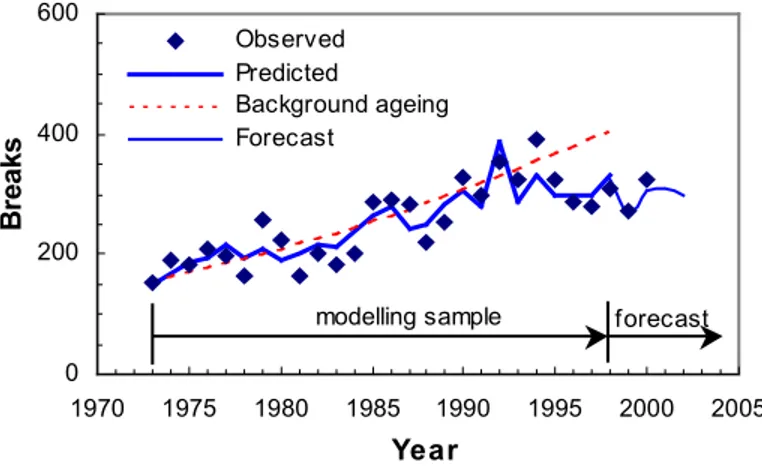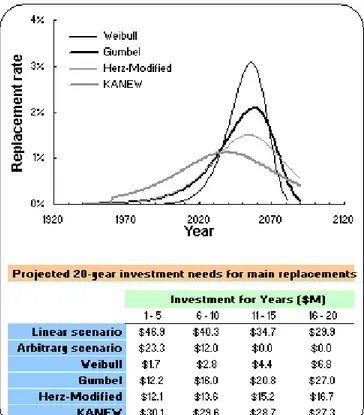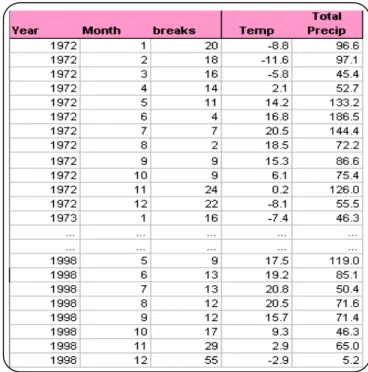READ THESE TERMS AND CONDITIONS CAREFULLY BEFORE USING THIS WEBSITE.
https://nrc-publications.canada.ca/eng/copyright
Vous avez des questions? Nous pouvons vous aider. Pour communiquer directement avec un auteur, consultez la
première page de la revue dans laquelle son article a été publié afin de trouver ses coordonnées. Si vous n’arrivez pas à les repérer, communiquez avec nous à PublicationsArchive-ArchivesPublications@nrc-cnrc.gc.ca.
Questions? Contact the NRC Publications Archive team at
PublicationsArchive-ArchivesPublications@nrc-cnrc.gc.ca. If you wish to email the authors directly, please see the first page of the publication for their contact information.
NRC Publications Archive
Archives des publications du CNRC
This publication could be one of several versions: author’s original, accepted manuscript or the publisher’s version. / La version de cette publication peut être l’une des suivantes : la version prépublication de l’auteur, la version acceptée du manuscrit ou la version de l’éditeur.
Access and use of this website and the material on it are subject to the Terms and Conditions set forth at
WARP - water mains renewal planner
Rajani, B. B.; Kleiner, Y.
https://publications-cnrc.canada.ca/fra/droits
L’accès à ce site Web et l’utilisation de son contenu sont assujettis aux conditions présentées dans le site LISEZ CES CONDITIONS ATTENTIVEMENT AVANT D’UTILISER CE SITE WEB.
NRC Publications Record / Notice d'Archives des publications de CNRC: https://nrc-publications.canada.ca/eng/view/object/?id=ebec0d58-fe4a-426f-8f0f-e3c1ee87d538 https://publications-cnrc.canada.ca/fra/voir/objet/?id=ebec0d58-fe4a-426f-8f0f-e3c1ee87d538
WARP - water mains renewal planner
Rajani, B.B.; Kleiner, Y.
A version of this paper is published in / Une version de ce document se trouve dans : Proceedings of the International Conference on Underground Infrastructure Research,
Kitchener, Ontario, June 11-13, 2001, pp. 1-6
www.nrc.ca/irc/ircpubs
1 INRODUCTION
The effective planning of water distribution system renewal requires accurate quantification of the structural deterioration of water mains. As water distribution systems comprise hundreds and even thousands of buried pipes, direct inspection of all of them is often prohibitively expensive. Identifying water main breakage patterns over time is an effec-tive and inexpensive alternaeffec-tive to measuring the structural deterioration of a water distribution sys-tem.
WARP is a prototype application under develop-ment at the National Research Council of Canada. In its current form as a prototype it is being developed as a MS-Excel application (later to be converted to a dedicated program). It is intended to demonstrate how the most promising breakage analysis models can be brought together to form a decision support tool. Currently, WARP consists of three modules:
(a) analysis of water main breakage patterns, (b) short-term operational forecasting and (c) long-term renewal planning. A fourth module will be added to facilitate prioritisation of individual water mains for renewal.
WARP observes three types of factors affecting water main breakage rates. The fist type is termed background ageing, which is a result of corrosion and other steady, continuous deterioration processes. The second type consists of cyclical environmental effects such as temperature and soil moisture. The third type comprises operational factors such as wa-ter main replacement rates and the rate of cathodic protection retrofit.
In the first module WARP uses an approach pro-posed by Kleiner and Rajani (2000a) to distinguish the effects of these three types of factors. In the sec-ond module WARP uses Fourier analysis to model and forecast the cyclical environmental (second type) factors affecting pipe breaks. This forecast is
WARP — Water Mains Renewal Planner
B.B. Rajani and Y. KleinerInstitute for Research in Construction, National Research Council of Canada, Ottawa, ON Canada
Figure 1. Schematic description of WARP Pipe data Input:
• Water main inventory • Breakage history • Replacement history • CP retrofit history
Apply multivariate model, extract parameters for backgroung ageing and time-dependent factors. Forecast short-term breakage rate Climate input: • Temperature history • Precipitation history
Use background age-ing to determine eco-nomic life expectancy of pipes in group.
Apply probability dis-tribution to expected life and compute in-vestment needs. Cost data input
• Breakage (direct, indirect, social) • Pipe replacement
External forecast of temperature and precipitation for short-term
Compare probability distributions and re-placement scenarios
Prioritise individual pipes for replacement (future de-velopment)
Fourier analysis to fore-cast short-term freezing index, rain deficit
2 subsequently used to forecast water main breaks in the short-term (3 to 4 years) (Kleiner and Rajani 2000b). In the third module WARP uses the back-ground ageing rates identified in the first module, to project long-term budgetary needs for water main renewal. The user can select various probability dis-tributions for water main replacement rates, examine various assumptions and strategies and compare their impact on the long-term capital investment needs. A schematic description of WARP is pre-sented in Figure 1.
The rest of this paper is organised as follows. Section 2 discusses briefly the nature of time-dependent factors affecting pipe breaks and their representation in the model. Section 3 describes how climate forecasts are made by WARP. Section 4 de-scribes briefly how WARP uses the model and cli-mate forecast to make short-term pipe break fore-cast. Section 5 discusses aspects of long-term planning of water main renewal. Section 6 describes WARP’s data requirements.
2 TIME-DEPENDENT FACTORS AFFECTING WATER MAIN BREAKS
Kleiner and Rajani (2000a & 2000b) have pro-posed a multi-variate exponential (or an alternative power model) to consider time-dependent cyclical and operational factors in predicting water main breaks. T t x a t N x e x N( )= ( t0) ⋅ (1)
where xt = vector of time-dependent covariates
pre-vailing at time t, N(xt) = number of breaks resulting
from xt, a = vector of parameters corresponding to
the covariates x; xto= vector of baseline x values at year of reference to. Time-dependent covariates (or “explanatory variables”) could be pipe age, tem-perature, soil moisture, etc. Parameters N and a can be found by regression.
Conceptually, pipe breakage rate can be viewed as a non-decreasing function of time (background ageing), with “noise” that is superimposed upon it by time-dependent effects (Fig. 2). Some of these time-dependent factors are steady while others are transient or cyclical in nature. Natural cyclical ef-fects tend to average out in the long run, however,
when dealing with short data sets, failure to consider their impact can introduce significant bias into re-sults. As well, any short-term (2 to 4 years) forecast of water main breaks, must consider these time-dependent effects.
Kleiner and Rajani (2000b) provided many refer-ences to reported observations concerning the influ-ence of temperature and soil moisture on the fre-quency of water main breaks. Rajani et al. (1996) developed a pipe-soil interaction model, which ex-plained that buried mains are restrained from movement by the frictional resistance between pipe and soil. Differential temperature change between pipe and soil, and also soil shrinkage due to dryness result in the development of stresses in the pipe. Rajani and Zhan (1996) described the mechanics and circumstances leading to generation of frost loads. They showed that dry soil (expected after an extreme dry season) has low latent heat capacity and will therefore lead to deeper frost penetration.
WARP in its current form is geared more towards cold climates and accounts for the factors age, freezing index (FI), rain deficit (RD) cumulative length of replaced water mains (CLR) and cumula-tive length of cathodic protection retrofit (CLCP). FI is a surrogate measure for the severity of winter and
RD is a surrogate measure for soil moisture. RD is
considered in two separate forms. Cumulative RD, which is a measure of the average soil moisture over a time period, corresponds to the effects described by Rajani et al. (1996). Snapshot RD, which is a measure of the soil moisture during winter, when the soil is mostly frozen, corresponds to the effects de-scribed by Rajani and Zhan (1996).
( )
xt0 0 200 400 600 1970 1975 1980 1985 1990 1995 2000 2005 Year B r e aks Observed Predicted Background ageing 95% confidence CP program Replacement programFigure 2. Background ageing and year-to-year variations in water main breaks
3 In equation (1) FI and RD are expressed as Z-scores, which are the normalised forms of these variables. CLR and CLCP are expressed as a per-centage of the population of water mains. Kleiner and Rajani (2000b) provide a detailed description of how all these variables are measured and calculated. In different climates FI may not be relevant but other factors may become important and should be considered.
Equation (1) should be applied to groups of pipes that are relatively homogeneous with respect to their response to the selected set of time-dependent fac-tors. The criteria of grouping the pipes into homoge-neous groups can be unique to a distribution system and is often not known a priori. Kleiner and Rajani (1999) described a method to partition water mains into homogeneous groups.
3 SHORT-TERM FORECAST OF CLIMATIC FACTORS
The variables FI and RD have to be forecast as well in order to forecast water main breaks in the short term. FI is calculated from daily temperatures and RD from monthly temperature and precipitation data (Kleiner & Rajani 2000b). Therefore, tempera-ture and precipitation have to be forecast in order to calculate the anticipated breakage rate. These
fore-casts can sometimes be obtained from local climate prediction services. If unavailable, WARP provides a “do it yourself” tool that uses Fourier analysis to forecast temperature and precipitation based on their history. This form of analysis breaks up the histori-cal data into separate harmonic components under the assumption that climate events are harmonic.
The historical variations of the data are trans-formed to the frequency domain, where one can
identify dominant underlying response-frequencies, and subsequently filter out spurious ones. Subse-quently, an inverse FFT can be applied to convert
Figure 3. Basic input screen
Figure 4. Short-term forecasting of pipe breaks
0 200 400 600 1970 1975 1980 1985 1990 1995 2000 2005 Ye a r B r ea ks Observed Predicted Background ageing Forecast forecast modelling sample
4 the filtered data back into the time domain to fore-cast climate for the desired time period.
4 SHORT-TERM FORECAST OF WATER MAIN BREAKS
Once the parameters of equation (1) are estab-lished by regression, and the climate is forecast us-ing Fourier analysis, water main breaks can be fore-cast for the short term (2 to 4 years). WARP allows the user to toggle variable on and off so that the modelling and the forecasts may be performed with the full set of variables or with a partial set. This feature makes the tool more flexible and adaptable to various conditions (Figs. 3 & 4).
WARP allows also the performance of regression on a sub-set of the observed data and the forecast of breaks that can subsequently be compared to the data that were not used (holdout sample) for regres-sion. In this way the user can see how well the model actually forecasts water main breaks.
WARP allows user flexibility in defining the be-ginning and the end of the base timestep of 12
months. It often useful to perform the analysis using a timestep period that is based on seasons rather than on the calendar. For example, in Ottawa the timestep that gave the best results was the May-to-April 12 month period, corresponding to the beginning of spring to end of winter period.
5 PIPE AGEING AND LONG-TERM RENEWAL PLANNING
Long-term planning of water main renewal re-quires accurate estimation of the underlying water main ageing rates in order to identify the time at which it is more economical to replace rather than to continue repairing the pipe. The “true” underlying ageing rate can often be masked by time-dependent factors. By distinguishing between the various fac-tors impacting breakage frequency, WARP can un-masks these true underlying ageing rates. Kleiner & Rajani (2000a) demonstrated how this “un-masking” of the underlying ageing trend is especially impor-tant in relatively short data sets, where cyclical envi-Figure 5. Data input - costs and user-defined replacement
5 ronmental effects can significantly bias the ageing trend.
Once the ageing rate is determined, WARP uses a method proposed by Kleiner & Rajani (1999) to de-termine median and variance of the life expectancy of the (presumably homogeneous) population of the pipes being analysed. The user can then assume various probability distributions (Weibull, Gumbel, Herz) of this life expectancy and view the invest-ment needs resulting from these assumptions (Figs. 5, 6)
In addition, the user can apply the KANEW model (Deb 1998), and compare the investment needs resulting from this model to those resulting from the Kleiner & Rajani (1999) approach.
The user can also enter arbitrary investment schedules in water main renewal and view how vari-ous scenarios are likely to impact total future expen-ditures (renewal investment plus breakage repair).
6 DATA REQUIREMENTS
WARP requires the following data for each group of pipes to be analysed as a homogeneous population: ♦ Historical number of pipe breaks by month
(Fig. 7).
♦ Average (preferred daily, but monthly will do) temperatures for the period corresponding to the available main breakage data (Fig. 7).
♦ Average monthly precipitation for the same period (Fig. 7).
♦ Total length of water mains in the group for each year in this period.
♦ Total length of water mains replaced in the group, preferably by month, but annual figures will suf-fice.
♦ Total length of water mains in the group retrofit-ted with cathodic protection, preferably by month, but annual figures will suffice.
♦ Geographical latitude of the location of the pipe network (accuracy of one degree is sufficient) to adjust for rain deficit calculations.
♦ Cost and economic data including pipe replace-ment, breakage repair, water loss, social cost of failure and discount rate (Fig. 4).
♦ Planning parameters including planning horizon, planning timestep, estimated ageing rate for new pipe, etc. (Fig. 4).
♦ For the KANEW model option, point estimates of the survival time of the water main group (three points are required).
7 SUMMARY
The computer application prototype WARP is a decision support tool that currently comprises three modules:
• Analysis of water main breakage patterns that considers time-dependent factors. The influence of each of these factors is quantified to identify deterio-ration rates of buried water mains as a result of nor-mal (background) ageing.
• Short-term operational forecasting conducted in two steps. The first step is to obtain monthly fore-casts for temperature and rainfall from an analysis of historical data (alternatively, forecasts can be ob-tained from climate centres that study weather
6 namics). The second step involves forecasting the breakage pattern of mains for the next few years using the failure patterns identified in the first mod-ule in conjunction with the climate information de-rived from step one of this (second) module.
• Long-term renewal planning uses the ageing rate identified in the first module to determine the re-placement rate of water mains in the system. The user can compare various patterns of ageing and se-lect the most appropriate one on which to base a long-term replacement strategy.
A fourth module, which allows users to set pri-orities for the renewal/replacement of individual water mains, will be added in the near future.
REFERENCES
Deb, A. K., Y. J Hasit, F. M Grablutz, and R. K Herz, (1998) “Quantifying Future Rehabilitation and Replacement Needs of Water Mains”, AWWA Research Foundation, Denver. Kleiner, Y., and Rajani, B. B. (1999). “Using limited data to
assess future need.” J. AWWA, 91(7), 47-62.
Kleiner, Y., and Rajani, B.B. (2000a). “Considering time-dependent factors in the statistical prediction of water main breaks.” Proc., American Water Works Association
Infra-structure Conference, Baltimore.
Kleiner, Y., and Rajani, B.B. (2000b). “Forecasting Variations and Trends in Water Main Breaks”, submitted to the
Jour-nal of Infrastructure Systems, ASCE.
Rajani, B., and Zhan, C. (1996). “On the Estimation of Frost Load.” Canadian Geotechnical J., 33(4), 629-641.
Rajani, B., Zhan, C., and Kuraoka, S. (1996). “Pipe-soil Inter-action Analysis for Jointed Water Mains.” Canadian
Geo-technical J., 33(3), 393-404.
Figure 7. Input of breakage, temperature and precipita-tion data
